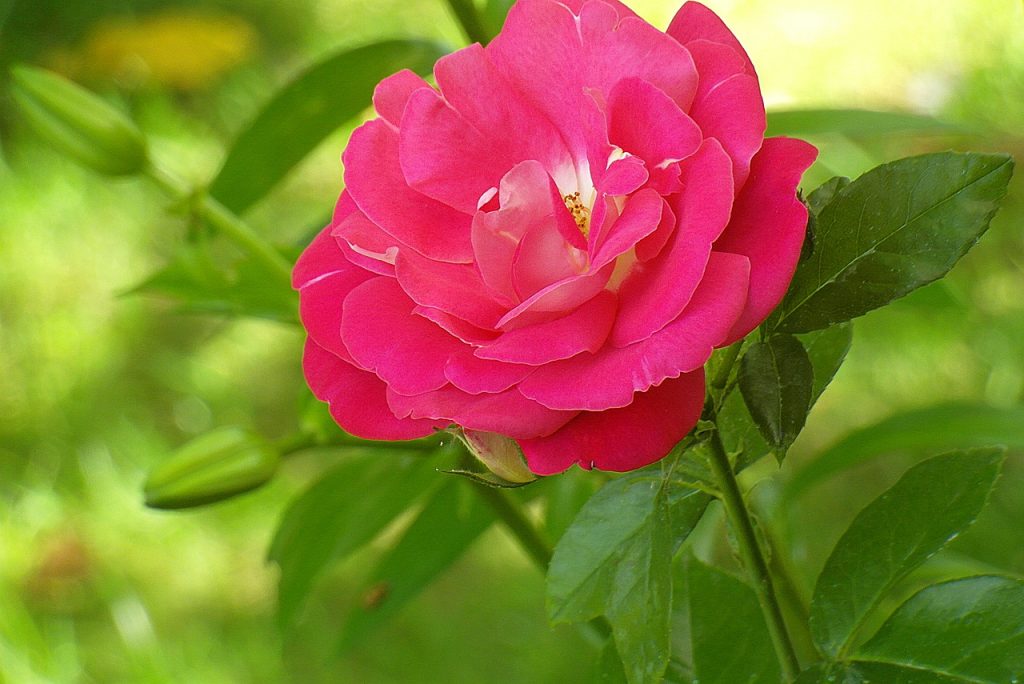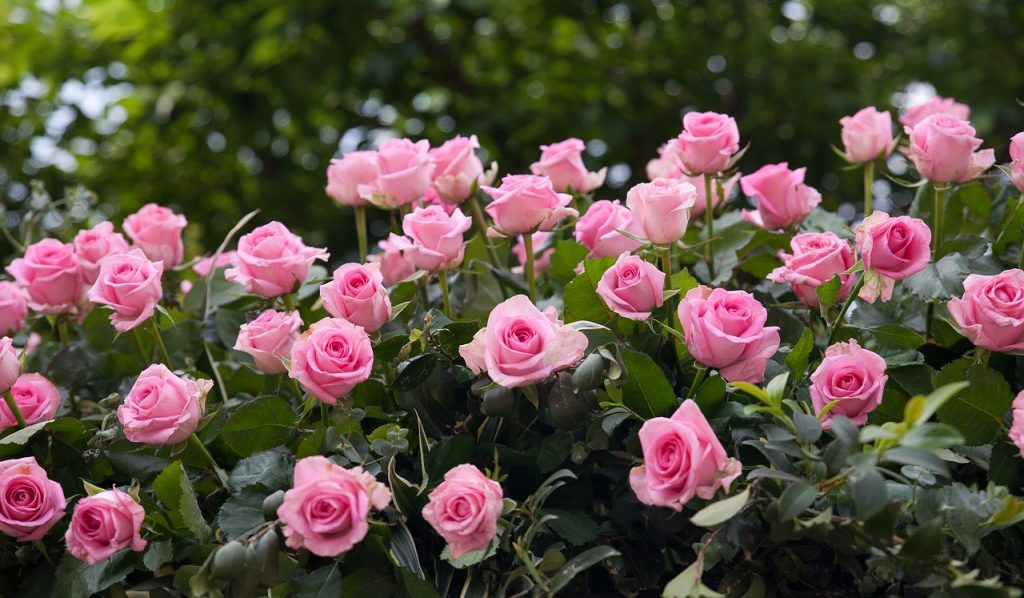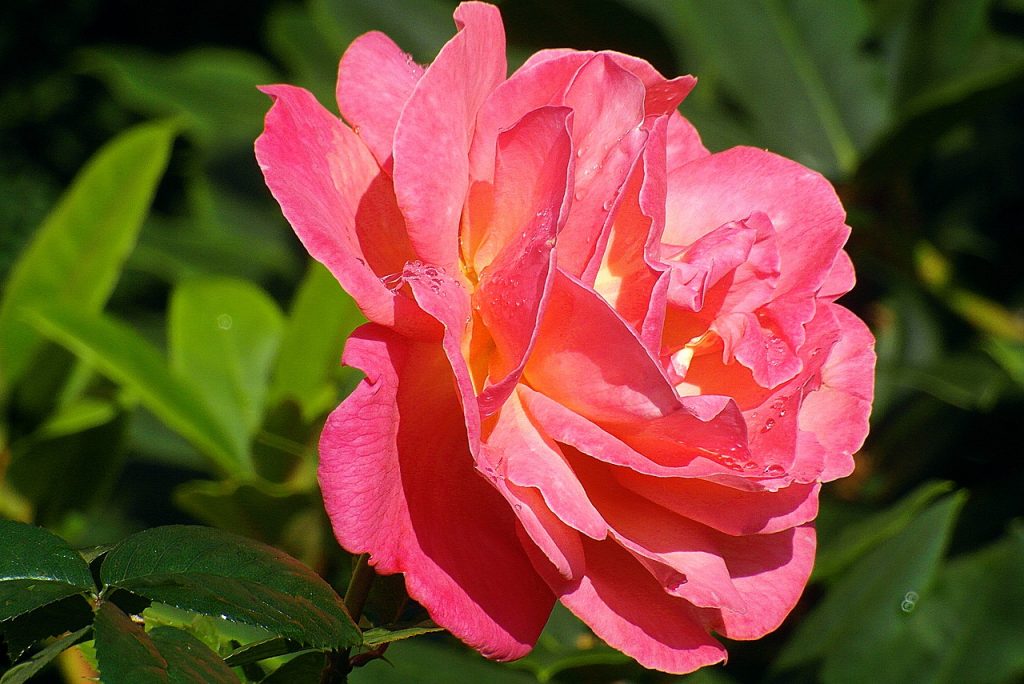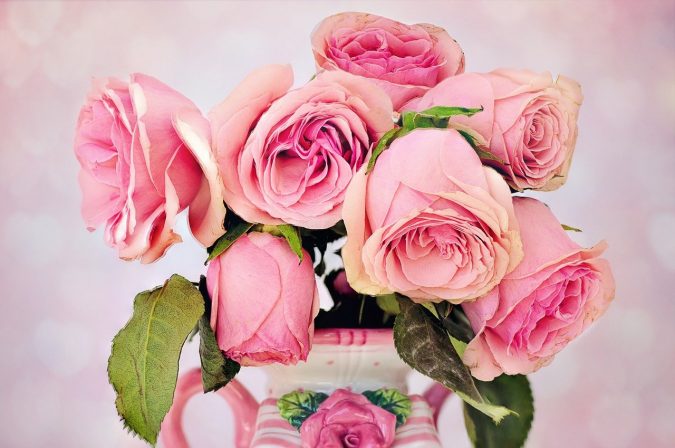Rose is one of the most durable and resilient flowers. With proper care, a freshly cut bouquet can stay in a vase for more than two weeks, delighting with a wonderful fragrance and fascinating with a magical transformation of slowly blossoming petals. Roses of red, burgundy, raspberry and other richly berry shades retain their attractive appearance slightly longer than light ones. This is explained by the fact that the light makes the petals of roses slightly dark. Bright colors are not harmful, and white is gradually losing its freshness and purity, being still strong and viable. Hybrid and peony varieties are the best in a vase.
How to choose fresh roses?

- A freshly cut rose has a “shirt” of petals that fit tightly to the glass. Bright roses have darker wind petals, white and tea petals often have characteristic salad or green veins. The shirt layer has a protective and frame function, protecting the bud from premature blossoming. Wind petals are woven and dried first to allow the glass to open freely. Shirt petals are very easy to determine – they are less beautiful, slightly deformed and differ from the basic ones in density. If the shirt petals are missing, it means that they have been cut off to give the rose a fresher and more aesthetic look. When making a presentable gift bouquet, the shirt can be removed, but the sellers should do it only at your request and in your presence. So you will be sure to give fresh flowers. Experienced florists do not tear off, and cut off the wind petals, so as not to deprive the bud of support and maintain the density of the cup.
- The sepals of fresh roses fit tightly to the bud and have a rich bright green color. The second stage of freshness is that the sepals are slightly bent, but still directed upwards. If they have dried up, taken a horizontal position, or bent towards the stem, this rose will most likely not last as long as you want.
- Most types of roses should have a glass that is dense, elastic and supple. The soft “cotton” bud suggests that the flowers have been kept for a long time in the refrigerator and now are in the withering stage. Bend the petal – it should gently spring and return to its original position. Take the rose by the stem and shake it slightly. If the petals came into motion and “danced”, refuse to buy. However, some types of roses, such as peony-shaped roses, may not have a thick bud due to their peculiarities. Usually these are garden roses, which are often used to make beautiful composite bouquets and compositions.
- Take a look at the appearance of the petals. The coloring should be uniform and homogeneous on both sides (except for the motley varieties). The surface should be free of stains, microcracks and other mechanical damage. If you notice dark rusty spots, it means that the roses were improperly stored and then reanimated by multiple sprays.
- Leaves must be dense and shiny, with a rich green color. Fading, lowered leaves are a sign of a flower is not the first freshness.
- The stem must be healthy, dense and green along the entire length. The surface should not be damaged, cracked and brown notches – these are signs of improper transportation.
- Carefully inspect the cut. Dry blackened rims or a loose surface is a sign of beginning rotting. This means that the roses have been standing in the water for a long time. The correct cut is clean, smooth and green.
It is useful to know

- The ideal moment to cut roses is the period when well developed sepals opened slightly and the first wind petal has just begun to peel off. Such roses cost the longest.
- The thickness of the stem does not matter. For example, gentle Russian roses with flexible thin stems are no worse than the Dutch beauties on thick wooden legs. The main thing is that the stem has the same thickness along its entire length. If the stem is very thin at the top, it will not withstand the weight of the flower and the glass will quickly droop.
- Many buyers try to choose dense unopened buds in the hope that they will last longer and open already in the vase. This is a common misconception. As a rule, imported roses are supplied in this form, which have not been given the opportunity to gain strength and have been cut early in order to be better preserved during transportation. Most likely, such flowers will not open, and droop their heads right in the buds. It is best to buy roses that have blossomed into half or one third. However, this rule applies to all flowers.
- Do not try to impress your imagination with a bouquet of meter length. It was fashionable at a time when the choice of roses was small. Flowers on long stems look spectacular only in high floor vases and live much less, because long stems can not quickly deliver buds moisture and nutrients contained in water. The optimal stem length is 30-40 centimeters.
- Do not take roses decorated with sequins or painted in exotic colors. Any coating makes it difficult to breathe the delicate petals and will definitely shorten the bud life. In addition, no self-respecting florist will voluntarily spoil a fresh healthy bud with paint. But he will be glad to show you the master class, if you ask for a decor or an original color spraying.
Nuances of shopping

- Buy roses at online salons and on major websites with a good reputation. Most often, small dots buy flowers at a low price from large centers from unsold large parties.
- Pay attention to the situation. The store should be cool, fresh and smell nice. Flower aromas should not penetrate the smell of chlorine, detergents and air flavors.
- If you are not allowed to touch and take out of the vases flowers – go. If the roses are of high quality, the sellers have no reason to worry that it will harm them.
- Online store with a good reputation is unlikely to send you a courier with a stale bouquet. First, it is very likely that you will refuse to buy. And secondly, good sellers are interested in making sure that you are satisfied and return to this store next time.
